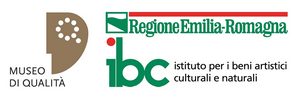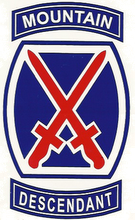From the book "In my father's foxholes and footsteps"
- From the book "In my father's foxholes and footsteps"
- The arrival in Italy and the transfer to the Apennines
- The attack on Mt Belvedere
- The defence of Mt Belvedere
- Il Malandrone, Cimon della Piella and Pietracolora
- The conquest of Castel d'Aiano and Mt della Spe
- The Spring Offensive
- Tolè towards Monte Pastore
- The conquest and crossing Savigno
- Fly down into the Po Valley
- Crossing the Po river
- The end of the war in Italy
- Return back to America and to the family
- All Pages
On the April 15 our aim was Mt. Croce. As we were moving along we went into a draw because of the heavy artillery started coming down and some more fellows were wounded. Up to this day I still can’t understand why I was so fortunate why I didn’t even get a scratch. Once we finished being in a draw we went towards Mt. Croce, machine guns opened fire and some more of our fellows got killed. It was around 4 pm when we started the climb up to Mt Croce.
I knew some of those fellows well. Sergeant John Marone was the name of the one who lay there dying, the one I wanted to give water to. The others killed were Sgt Schroeder and Lt Robert Barr. I remember Lt Barr he was a young man. Most of the lieutenants were college educated young men; some of them made lieutenants while still in college. Carl Ugenon, Gerold Atkins and Marvin Lusk, I knew them as well and they too were killed by German machine gun fire.
Machine gun fire was usually used to cover the areas that were in clear view and mortars were used to cover the areas that didn’t. Every night was the same drill, we positioned all our equipment because we never knew if there would be a counterattack or not. So we remained there and began to organize our equipment when some more artillery fire hit us and shortly there after, several counterattacks by the Germans. Two more of our men were wounded, luckily, at that time no one was killed but more were wounded at Mt Croce. I call it Mt. Croce and then I think “Oh, Mt Cruz “. We stayed overnight on Mt Core on April 15. The following morning we proceeded towards our next objective: the small village of Madonna di Rodiano with K Company on the left and L Company on the right. As soon as we left we encountered another German counterattack, which caused everyone to split up and take cover. I mention this because that is how I got to know Sgt. Ranta. Ranta was Norwegian name. There were many Norwegian and Swedish boys in this outfit. The Sergeant was with the 2nd Platoon of L Company. They had gone ahead while the other companies stayed behind because of the split caused by the German counterattack. Anyway, we were able to into Madonna di Rodiano were 67 Germans and 6 of their wounded surrendered. Madonna di Rodian was a first aid station and a supply depot used by the Germans. Luckily we didn’t lose any men there. Thatwas on April 16.
Then we turned back. According to plans we were supposed to go farther east toward Mt. Mosca, near Route 64. Once we arrived we found out that the infantry from the 1st Armored Division were already there. So we turned around and went back to Rodiano to sleep for the night.
As I recall that night, I can remember Torble Ranta who was a sergeant of one of the platoons. He had distinguished himself during an attack at Mt. Belvedere and also in second offensive which made him a Lieutenant in the field. In fact there were two soldiers made Lieutenant in the field at that time. Realistically more than that but they were killed in action. The more fortunate one was Lt. Ranta because he survived and led the second platoon into Madonna Rodiano. He entered into the village and began to holler to see if there were any more Germans or prisoners to capture. Anyone who stood up and went towards a place not yet under control usually meant he was taking his life into his own hands: one could leave with a bunch of prisoners or end up going towards a burst of machine gun fire or rifle fire. So you would have to give a man like that a lot of credit, to go into a building and leave with German prisoners and six wounded. He distinguished himself again in later action. I never knew what became of him or heard of him again and I don’t think he had ever been to any of the veteran reunions. I remember those fellows because they were so nice. I especially remember some would hide their bars because they wanted to mix in with the regular troops. They aren’t supposed to joke around; they are only supposed to give orders. You admire people like that …at least I do.
On the April 17 we were given the task of clearing Le Costa ridge. We turned back towards the ridge, which had already been seized by the 2nd Battalion, but there still could have been remaining German resistance. We wanted to move as far and fast as we could. A lot of the ridges and areas nearby were still not cleared or cleaned. There still could have been some snipers or some German machine guns, like those that wounded, and then killed, Sgt Marone, the one that I wanted to give water.








